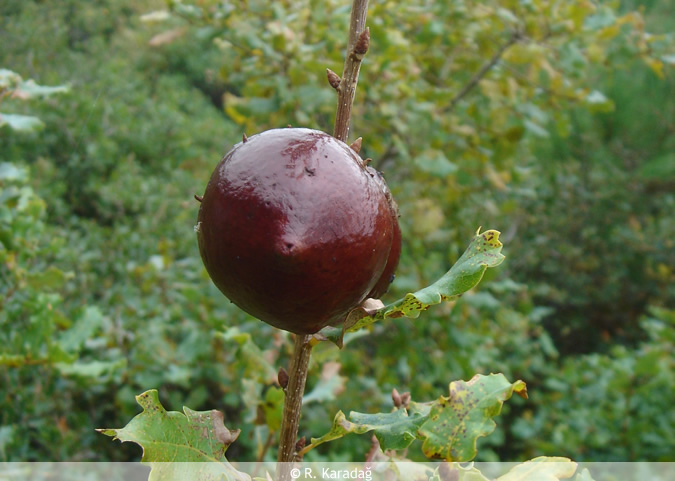This semi-deciduous little tree grows to less than 20 feet in height. The leaves are 1 to 4 inches long with unevenly scalloped edges. The acorn-caps are about of an inch long and enclose two-thirds of the acorn. In the Eastern Mediterranean areas of Turkey and adjacent areas of Southwestern Asia , bushy forests of this oak often occur, up to an elevation of 6,300 feet . It also can be found singly in the maquis.
Historical Data
The chemical processes of this corrosion have not been adequately explained. Apparently the effect of light and excessive acidity destroys the wool. The use of a ferrous mud or ferrous salts is less harmful.Since 1981, the black dye in DOBAG carpets has been prepared this way. The oldest DOBAG rugs, now 20 years old, show no corrosion of the black. Plants containing tannins are suitable for black dyeing. Sicilian sumac (Rhus coriaria) and mullein (Verbascum) have already been mentioned. The highest content of tannins is found in the Quercus infectoria of some species of oak and in the gallnuts produced indirectly by gall wasps on some other species of oak. A black that is absolutely free of corrosion can be made with a triple dyeing process: blue with indigo, yellow with dyer's-weed (Reseda luteola), and red with madder (Rubia tinctorum). From H. Bohmer and R. Karadag investigations, the black in classical Persian carpets from the Safavid period has been made in this way.

